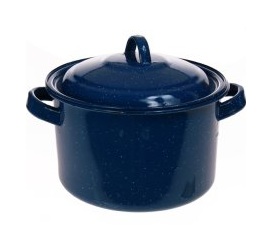Tips to properly separating cream using a cream separator:
- Maintain a warm temperature fresh out of the cow or reheat to 90-100 degrees F.
- Close pour spout before pouring milk into retaining bowl on top.
- Hand crank or turn on electricity and wait for separator to speed up to proper speed. (Mine has a bell that stops ringing when you’re going fast enough)
- Pour a small jar of warm or hot water onto the float (bypassing the top tank and valve) and let the water warm up the metal parts.
- Slowly open pour spout and allow to separate a thin flow. If everything comes out the proper spouts, the flow can be increased.
- Do not stop between cows or pots of milk. The earlier separated cream remaining on the disks will cool and thicken, clogging all the ports. Maintain speed of rotation of the separator, even if there is no milk being separated. When the next batch of milk is ready, pour it in and repeat process and you should be able to avoid any clog issues.
- When finished, you can run warm water through again to rinse the parts. They still need to be taken apart and thoroughly cleaned and dried.
Separating cream from a jar or pot:
When milking one cow, the use of a cream separator is often more work than it’s worth. In that case, we recommend using a ladle and scooping cream off the top of jars or 2-3 gallon pots after the cream has risen for a day or two. The longer the cream sets, the thicker the top cream will be. Butter is best made from either cream separator cream or only the top of skimmed cream from a jar – whipping cream thickness.


